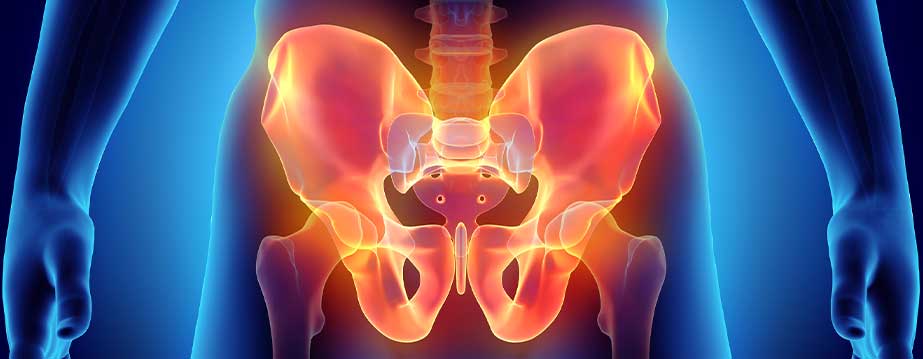
The pelvic floor is composed of a sheet of muscles, ligaments, and other tissues located across the bottom of the pelvis that supports the pelvic organs.
The rectum, vagina, and urethra all pass through the pelvic floor to allow stool, urine, and babies to be expelled from the body. Dysfunction of the pelvic floor can lead to pelvic pain and problems with storage of stool in the bowel and its elimination; it can also lead to urinary incontinence and/or difficulties in emptying the bladder.
Pelvic floor dysfunction sometimes results in the prolapse of organs located in the pelvis, such as the bladder, uterus, or bowel.
What causes pelvic floor dysfunction?
The most common cause of pelvic floor dysfunction is damage caused by vaginal childbirth, and because of this, pelvic floor dysfunction is very common in women, with around one out of ten women requiring surgery for this condition. Regular straining due to chronic constipation can also lead to damage to the pelvic floor. Other causes of pelvic floor dysfunction include damage incurred during some type of surgery, such as a hysterectomy, and simple aging. Changes in hormones because of menopause can weaken the pelvic floor and lead to dysfunction


Symptoms
In addition to obvious symptoms like changes in the passage of urine and stool, affected individuals with prolapsed organs may experience a sensation of fullness in the lower abdomen that worsens with standing and gets better in response to lying down. Some patients present with chronic pelvic pain. Diagnosis is usually straightforward based on the symptoms and a physical examination. An anorectal or vaginal ultrasound is usually performed to provide more details about the extent of the disorder. Other tests to evaluate nerve and tissue function may be conducted as well.
Treatment
In mild cases, Kegel exercises to strengthen the muscles of the pelvic floor may be effective. Sometimes a pessary can be placed into the vagina to help support the organs; this procedure is usually just temporary to relieve symptoms while the patient waits for surgery. Definitive treatment requires surgery to replace prolapsed organs and to repair the damage to the pelvic floor. Failure to correct this situation can lead to worsening of the symptoms and serious complications due to retained stool and prolapsed organs.
Surgery
The type and extent of surgery depends on which organ(s) are prolapsed and the extent of the dysfunction. In many cases, the surgery can be performed via the vagina, meaning no incision is made in the abdominal wall, but in other cases, small incisions need to be made in the abdominal wall to allow access to the tissues and organs that need repair. If the uterus is badly prolapsed, it will usually be removed during the procedure. Sometimes a mesh is placed to help support the tissues.
Recovery is usually straightforward, but patients need to refrain from straining, lifting heavy objects, and prolonged standing for up to three months after the procedure.
